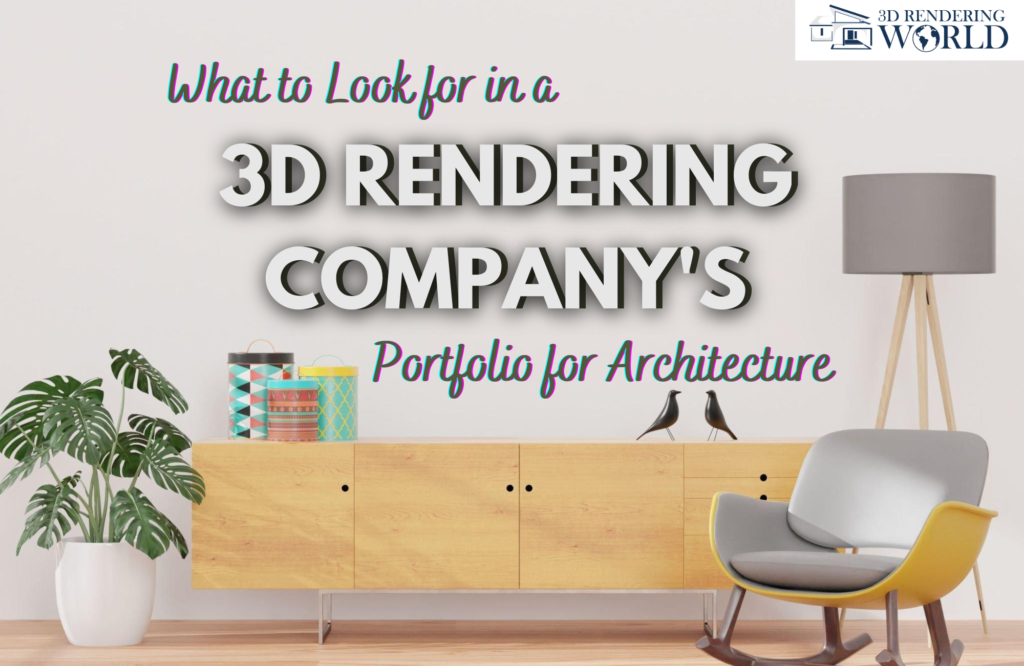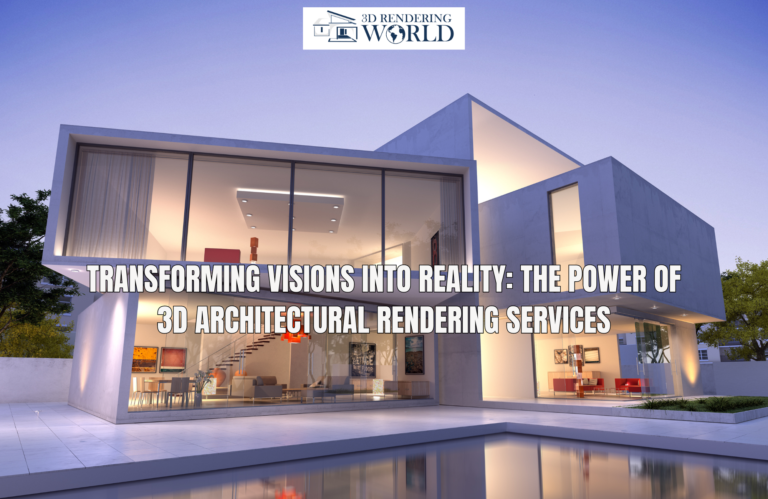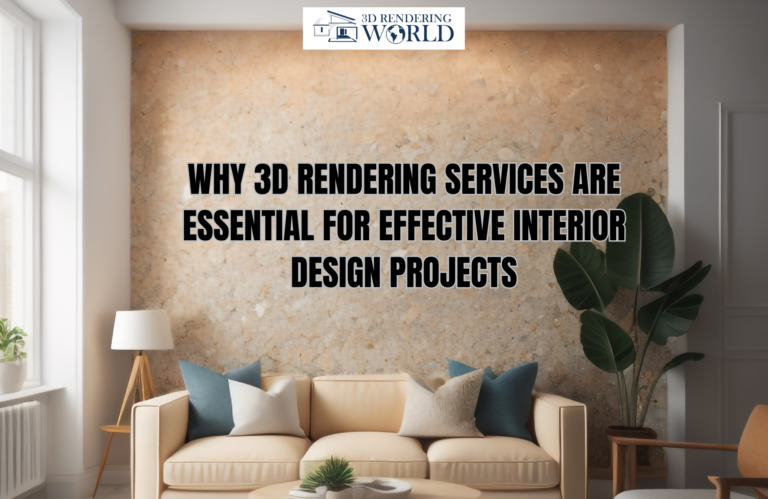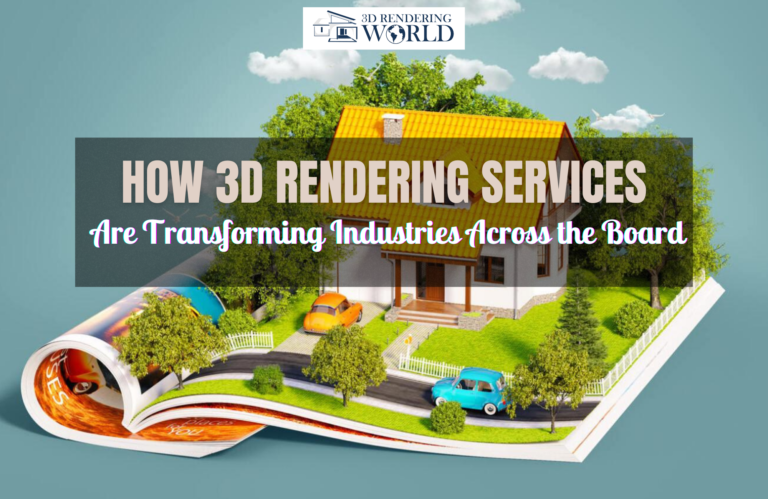Introduction
When searching for a 3D rendering company to bring your architectural designs to life, their portfolio is one of the most important factors to evaluate. A portfolio showcases a company’s style, skills, experience and ability to meet your unique project needs. Here’s what to look for when reviewing 3D rendering portfolios for architecture projects:
Range of Project Types and Sizes
Look for portfolios containing a diverse range of residential, commercial and industrial projects of varying sizes and scopes. This shows their adaptability and ability to render single homes as well as major commercial developments. Varied samples indicate they can meet the unique demands of different architectural project types.
Styles and Design Complexity
Examine the architectural design styles represented in their sample renders. You want to see realistic 3D visualizations of modern, traditional, minimalist and other styles to match your specific project. Also look for samples displaying complex building shapes, unique structures and intricate details accurately rendered in 3D. This highlights their technical skills.
Realistic Materials and Lighting
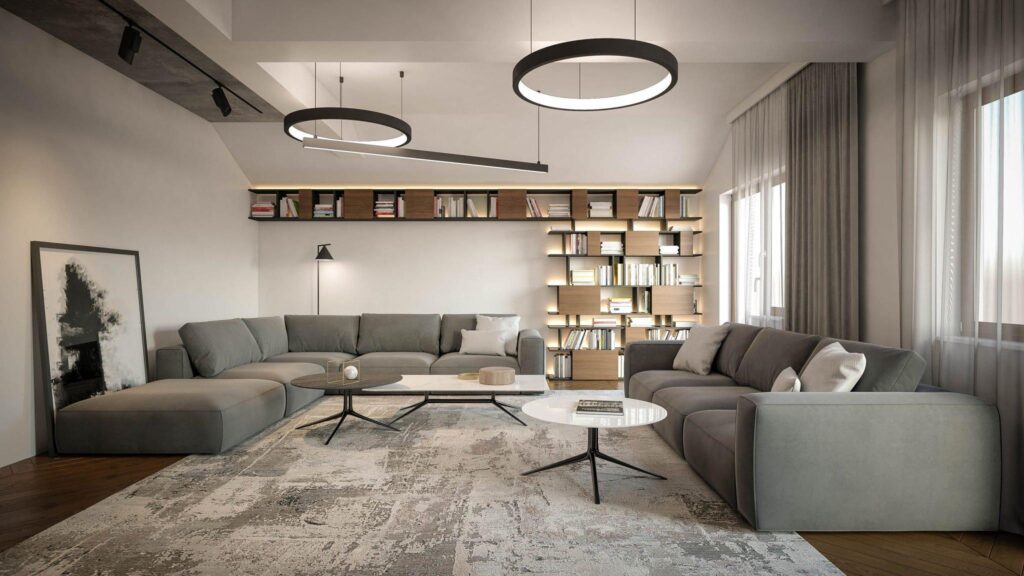
Look at how realistic the materials like stone, wood, metal and glass look in the renderings. Materials should have accurate textures and react properly to lighting. Lighting is also key – see realistic soft shadows, light reflections and illumination. This attention to materials and lighting brings designs to life.
Image Quality and Detail
Zoom in on sample images to inspect quality and detail. Renders should be high-resolution and crisp when enlarged, without Pixelation or blurriness. Small details like furniture, plants, people and text should be clearly defined and sharpened. This shows care taken with every aspect of the 3D visualization.
Environment and Context
Renders shouldn’t just show an isolated building. Look for projects set within scaled environments, landscapes and contexts appropriate for the design. This includes terrain, gardens, roads, parking lots, signage and surrounding buildings or structures. This provides a realistic preview within its intended environment.
Animation and Interactive Renders
Many portfolios now include animated walkthroughs and interactive renders. Test these by scrubbing through timelines and clicking hotspots. Smooth animation and quick response times illustrate advanced technical capabilities for bringing designs to life through motion and interactivity.
Client Types and Testimonials

Review the types of architectural firms and clients featured in their portfolio. Relevant experience with reputable clients demonstrates their reliability and relationships within the industry. Also look for positive client testimonials affirming their professionalism, quality and services. Happy clients indicate likely satisfaction.
Awards and Recognition
Some portfolios highlight awards, publications features and design contest wins. Being recognized through these channels shows achievement of high standards and peer validation. Just be sure awards come from reputable organizations and publications within the field.
Range of Viewpoints and Lighting
Look for renderings portrayed from multiple viewpoints like aerial views, close-ups, street views and interior perspectives. Various angles showcase the design from all sides. Also look for samples showing different times of day, weather conditions and lighting. This shows proficiency at using light and shadows to dramatize designs.
Speed and Efficiency
Portfolios sometimes list project timelines and deliverable speeds. Faster turnaround times display efficiency you can likely expect. But be wary of extreme speeds that suggest quality or service could suffer. Reasonable timelines based on project complexity indicate reliable quality and service.
Responsiveness and Communication
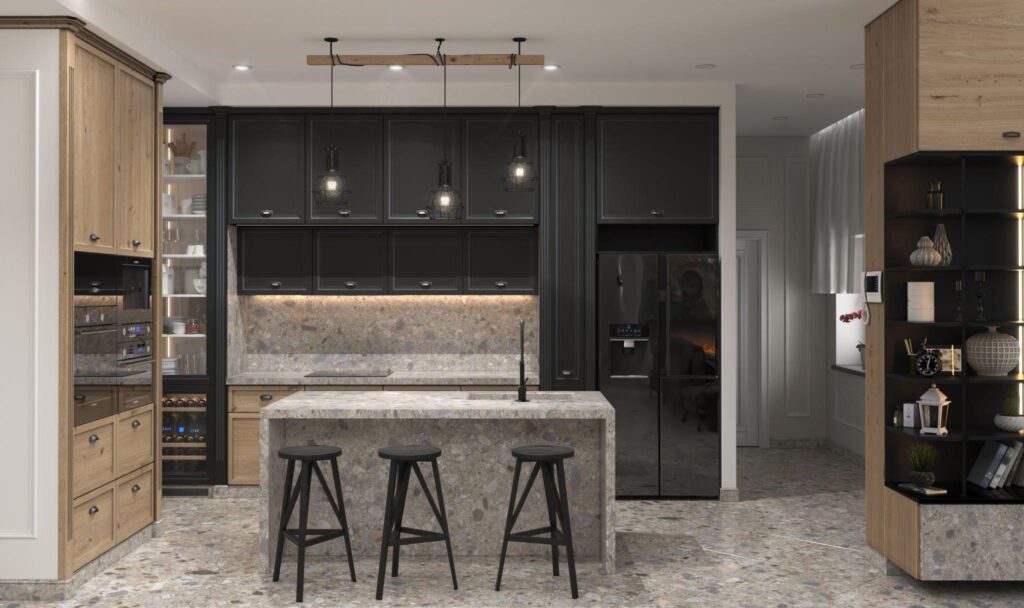
A portfolio is primarily a visual medium, but may also highlight communication, revision and approval processes. Descriptions of responsive communication, managed feedback cycles and efficient collaboration reflect positively on their working process.
Personalization and Creativity
While technical skills are crucial, you also want a provider who gets creative with renders. Look for unique perspectives, custom scenes, smart compositions, stylistic lighting and other personalized touches that make designs distinctive. This artistic approach can help your project stand out.
Match Your Goal and Style
Consider your goal and style for architectural visualizations and narrow the focus while reviewing portfolios. If photorealism is most important, examine materials and lighting quality closely. If style matching is critical, hone in on their demonstrated range. Focus on strengths aligned with your specific needs.
Thoroughly examining architectural rendering portfolios using criteria like these helps match you with a qualified 3D provider. Their samples serve as evidence they can meet your unique project requirements and exceed your expectations. With an ideal portfolio providing confidence, you can focus discussions more on understanding specific needs and perfecting the visualization plan. Just be sure to also review ratings, talk with references and evaluate other factors to make a fully informed choice. Partnering with the right 3D rendering company starts with what their portfolio reveals about skills, experience and sensibilities.
Look Beyond Just Buildings
Many architectural render portfolios focus solely on buildings. But examples of landscapes, 3D interior renderings and object modeling can also be useful if relevant to your project. 3D exterior renderings display abilities with natural elements like plants, skies and lighting. Interiors showcase material mastery and detail work. Products and furniture modeled accurately demonstrate precision and realism. Don’t limit your search to just building exteriors.
Range of Design Firms Represented
Try looking up some of the design firms and architects featured in their portfolio. Seeing a range of small local firms along with prominent national or global names indicates broad experience suited for projects at any level. Having worked successfully with both boutique studios and large multinational practices shows adaptable expertise.
Ask About Additional Samples

If a portfolio seems limited or doesn’t feature examples similar to your project, ask the provider if they have additional samples not posted publicly. Often renderers develop images that clients prefer to keep private or maintain a wider selection beyond their primary portfolio. Requesting additional, more relevant samples can provide a better idea of their capabilities.
Look for Real Photos Alongside Renders
The best portfolios contain real photographs of completed buildings shown side-by-side with project renderings. Comparing the visualization and real-life outcome helps evaluate accuracy and post-production skills. Pay attention to matching angles, lighting, materials and other elements in the paired images. This proves their ability to make digital renders look like the finished built product.
Alignment with Your Brand Style
Consider your own architectural brand identity and style while evaluating portfolios. Look for renders that visually communicate in a way that matches your desired firm image and sensibilities. Renders should capture your vision while attracting your ideal type of clientele. Consistent style alignment between their work and your identity brings cohesion to the collaboration.
Range of Delivery Formats
Today’s portfolios commonly include a range of delivery formats – static renders, animated fly-throughs, 360 spins, VR, video and more. Look for diverse examples showcasing versatility across output types. More options provide flexibility to select formats that best suit your project goals and audience. But also inspect quality across all sample types, not just a few highlights.
Signs of Photorealism

At the highest quality levels, architectural renders blend seamlessly with photographs and real life. Study portfolios for signs of photorealism – perfect reflections, depth, sharp shadows, natural color gradations, accuracy of materials, flawless lighting behavior and more. Mastery of these elements enables creating visualizations indistinguishable from the real thing.
Tell a Story
The strongest portfolios use rendering techniques to tell a story about each project. Look for excellent compositions, varied perspectives, smart focal points, dramatic lighting, and context showing human activity and scale. These storytelling elements invite viewers to engage and envision themselves inhabiting the spaces portrayed. Compelling visual storytelling makes a greater impact.
Ask About Their Process
A portfolio showcases end results but doesn’t explain the process behind them. Be sure to ask providers about their specific workflow, timeline, communication methods, revision process, quality control and other production details. Portfolios attract you, but process keeps you informed and reassured throughout the project.
Conclusion
In summary, evaluating architectural rendering portfolios requires going beyond just passive viewing. Scrutinize images closely, research represented firms, ask for additional samples, compare versions, inspect technical qualities and consider alignments with your own identity and goals. The portfolio provides the all-important first impression – by exploring it deeply, you can determine if a 3D rendering partner has the experience, aesthetics and capabilities to meet your unique visualization needs.
Frequently Asked Questions
Some important technical elements to evaluate include: lighting accuracy, shadow rendering, reflectivity of materials, texture quality, image resolution/sharpness, detailing, animation smoothness, interactivity, and photorealism. Quality in these areas indicates strong technical skills.
Yes, client references and testimonials can provide useful insights into a 3D rendering firm's customer service, communication skills, timeliness, and ability to bring designs to life based on client goals. These insights complement the visual portfolio.
Look for consistent style elements between their renders and your own desired aesthetics - composition, lighting, materials, environments, and overall visual impact. Renders should communicate your sensibilities while attracting your target clients.
Key questions include - how many revisions/feedback cycles are typical per project, what is the project development timeline, what methods of communication and project management do they use, do they have quality control measures, and how much client involvement do they expect at each stage?
Animation and interactivity functionality can be impressive technically, but the priority decision factors should be overall visual quality, experience with similar project types, and client satisfaction ratings. Don't let gimmicky extras outweigh fundamentals.
If portfolio styles differ significantly from your vision, ask to see additional relevant samples not in their primary portfolio. If no better style match exists in their full body of work, you may need to consider other providers more aligned aesthetically.
Look for a healthy mix of recently completed projects (within 1-2 years) alongside some older highlight pieces to assess consistent quality over time. Too many outdated samples could signal stagnating skills and technology.
Yes, clarity about their collaboration process with architects, designers, stakeholders and clients is very beneficial to align expectations. Details about communication frequency, feedback integration, and keeping clients in the loop add helpful context.

